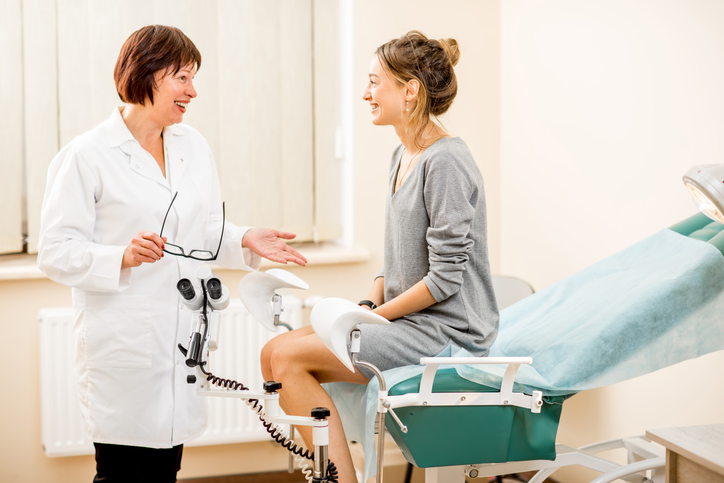
How Can You Maintain Good Cervical Health?

The cervix is the narrow, lower opening to the uterus, located at the top of the vagina. It acts as a pathway between the vagina and the uterus, thus playing an important role in the female reproductive system.
Cervical cancer can occur when the cervical cells become abnormal and begin to grow out of control. Most cases of cervical cancer are caused by the human papillomavirus (HPV), which is a common sexually transmitted virus that often goes away on its own. There are many types of HPV, but two strains (HPV 16 and 18) are responsible for 70% of cervical cancer cases. Nevertheless, an estimated 5.5-11% of cervical cancer cases are not caused by HPV. The non-HPV related cases of cervical cancer are adenocarcinomas, or cancers that start in glandular cells.
Fortunately, individuals can usually prevent cervical cancer from developing by following proper screening guidelines in order to detect abnormal cells and treat them before they turn into cancer. Below are the ways you can maintain good cervical health.
Cervical Cancer Screening
Currently, there are two tests available for cervical cancer screening: the Pap test and the HPV test. Both tests require a small sample of cells from the cervix. To obtain the sample, a health care provider will insert a device called a speculum into the vagina while the patient is on the exam table. The speculum helps to open the vagina and provide a clear view of the cervix. Then, the provider will use a small brush or another sampling instrument to remove the cells from the cervix. This sample is then sent to a lab for testing.
For a Pap test, the sample is examined for abnormal cells, and for an HPV test, the sample is tested for high-risk strains of HPV. Although one sample can often be used for both tests, sometimes two samples are taken.
The current guidelines for cervical cancer screening from the American College of Obstetricians and Gynecologists (ACOG) are as follows:
- Women should begin cervical cancer screening at age 21 with regular Pap tests. Between the ages of 21-29, patients should have a Pap test every 3 years.
- Between the ages of 30-65, patients have three screening options:
- A Pap test alone every 3 years
- An HPV test alone every 5 years
- A joint Pap and HPV test every 5 years
- After age 65, individuals with adequate screening results who are not at high risk of developing cervical cancer can stop screening. Additionally, those who have had a hysterectomy with removal of the cervix who do not have a history of precancerous cervical cells can stop screening.
There is no test specifically designed to screen for non-HPV related cervical cancer, but the Pap test can still be used to detect abnormal cells.
HPV Vaccination
Although HPV vaccines cannot eliminate all types of HPV and cervical cancer, they can help reduce the risk of developing cervical cancer and other HPV-related cancers. The Centers for Disease Control and Prevention (CDC) recommends that everybody (male and female) receive two doses of the HPV vaccine starting at age 11 or 12. For those receiving their first HPV vaccine at age 15 or older, a third dose is necessary. If you were not vaccinated against HPV during your adolescence, you may still be able to get vaccinated, but you should speak with your health care provider to determine if it is appropriate given your personal circumstances.
Safe Sex
Practicing safe sex by using condoms can help prevent the spread of sexually transmitted infections (STIs) such as HPV. Because HPV is spread through sexual skin-to-skin contact, condoms are not 100% effective at preventing it from passing from one individual to another, but they do provide some protection. Furthermore, condoms can help prevent the spread of other STIs like chlamydia, gonorrhea, syphilis, and HIV/AIDS, the presence of which can increase a person’s risk of contracting HPV.
Summary
While the thought of cervical cancer may be very frightening, luckily, it is highly preventable when individuals take preventative measures. Regular screening, HPV vaccination, practicing safe sex, and following up with any next steps recommended by your health care provider can help you maintain good cervical health.
Resources:
- American College of Obstetricians and Gynecologists (ACOG). (2017). Cervical Cancer Screening [Pamphlet]. Published by the American College of Obstetricians and Gynecologists.
- Centers for Disease Control and Prevention (CDC). (2021, November 1). Human Papillomavirus (HPV) Vaccine Schedule and Dosing. https://www.cdc.gov/hpv/hcp/schedules-recommendations.html
- Cleveland Clinic. (2018, April 30). Cervical Cancer. https://my.clevelandclinic.org/health/diseases/12216-cervical-cancer
- Fayed, L. Medically reviewed by Anita Sadaty, MD. (2020, August 12). How to Have a Healthy Cervix. VeryWell Health. https://www.verywellhealth.com/how-to-have-a-healthy-cervix-582022
- Mayo Clinic. (2021, June 17). Cervical cancer. https://www.mayoclinic.org/diseases-conditions/cervical-cancer/symptoms-causes/syc-20352501
- National Cervical Cancer Coalition (NCCC). (n.d.). Understanding Cervical Cancer Prevention. Retrieved December 29, 2021, from https://www.nccc-online.org/understanding-cervical-cancer-screening/
- Xing, B., Guo, J., Sheng, Y., Wu, G., & Zhao, Y. (2021). Human Papillomavirus-Negative Cervical Cancer: A Comprehensive Review. Frontiers in oncology, 10, 606335. https://doi.org/10.3389/fonc.2020.606335






